

NOTE
Do not turn the bolts because the reflector in the headlight comes off.
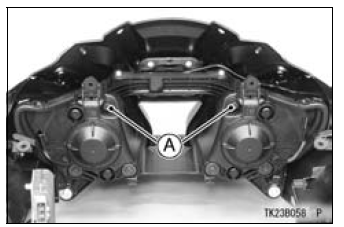
A. Bolts
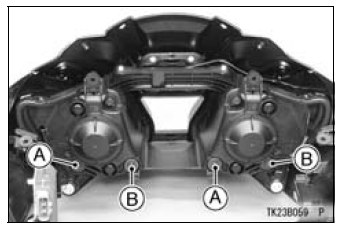
A. Left Adjuster
B. Right Adjuster
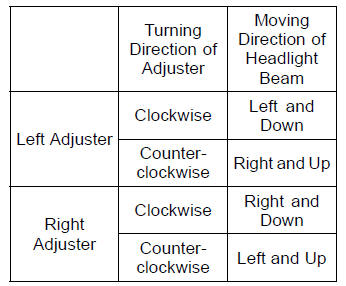 To move the
To move the
headlight beam leftward,
turn the left adjuster clockwise
and turn the right adjuster counterclockwise
same number as the left
adjuster was turned until the beam
points straight ahead.
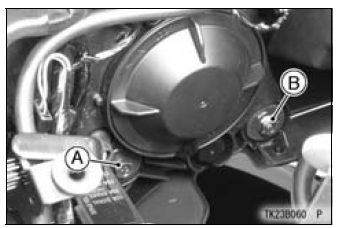
A. Left Adjuster
B. Right Adjuster
NOTE
On high beam, the brightest points should be slightly below horizontal.
The proper angle is 0.4 degrees below horizontal. This is a 50 mm (2.0 in.) drop at 7.6 m (25 ft) measured from the center of the headlight, with the motorcycle on its wheels and the rider seated.
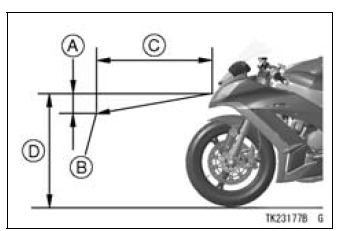
A. 50 mm (2.0 in.)
B. Center of Brightest Spot
C. 7.6 m (25 ft)
D. Height of Headlight Center
 Battery Installation
Battery Installation Fuses
FusesMain Throttle Sensor Resistance Inspection
Turn the ignition switch to OFF.
Measure the main throttle sensor resistance in the same
way as input voltage inspection, note the following.
Disconnect the throttle sensor setting adapter [A] from the
connector of the main harness side.
Special Tool - Throttle Sensor Setting Adapter: 57 ...
Rear Wheel Rotation Sensor Wiring Inspection (Service Code b 45)
Disconnect the rear wheel rotation sensor lead connector
[A] (see Rear Wheel Rotation Sensor Removal in the
Brakes chapter).
Disconnect the KIBS hydraulic unit lead connector (see
KIBS Hydraulic Unit Removal in the Brakes chapter).
Check the wiring continuity of the G lead and R ...
Drive Chain Slack Inspection
Refer to the Drive Chain Slack Inspection in the Periodic
Maintenance chapter.
Drive Chain Slack Adjustment
Refer to the Drive Chain Slack Adjustment in the Periodic
Maintenance chapter.
Wheel Alignment Inspection/Adjustment
Refer to the Wheel Alignment Inspection in the Periodic
Maintenance ...